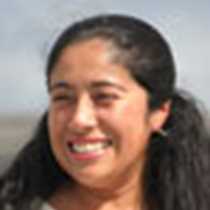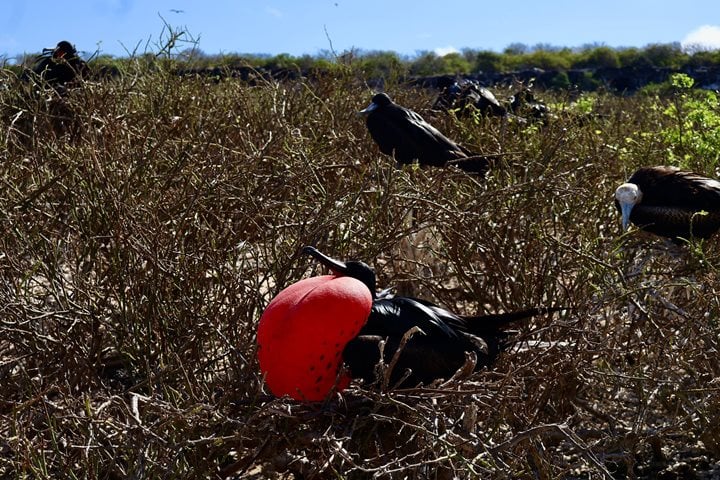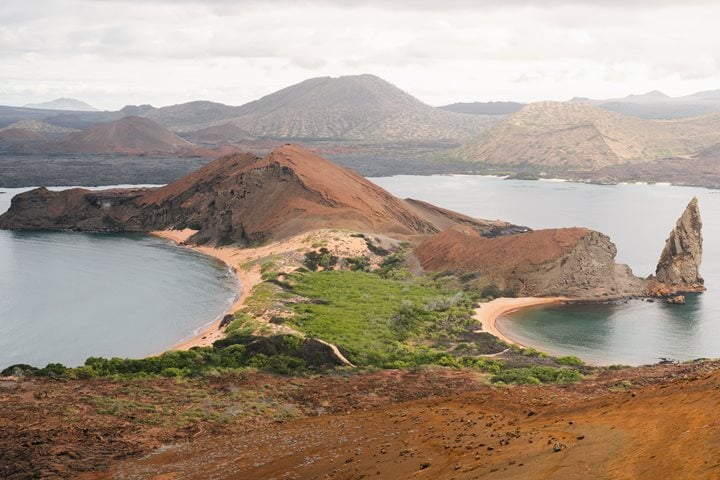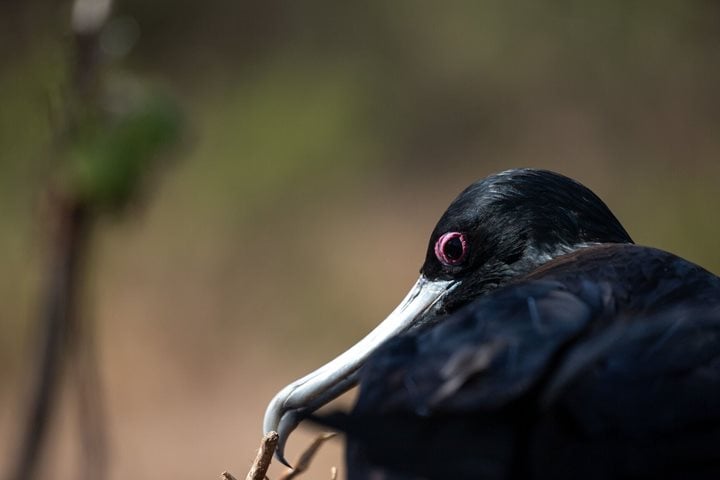This morning we dropped anchor at Cerro Dragon, located on the northern part of Santa Cruz Island. We also visited Santa Cruz Island yesterday, at Puerto Ayora, but this area is not inhabited and differs a lot from the southern region. This morning, due to the weather conditions and in an effort to avoid the heat of the equatorial sun, photography walks were offered starting early in the morning, while the natural history walks started one hour later. The disembarkation area is very rocky and we had to be careful, but soon we reached the white sandy area. We had the chance to explore this zone, where many little shells and pieces of pencil spine sea urchins are everywhere, witnesses of life long gone, a good example of an organic beach.
As we headed further inland, we could observe the big prickly pear cacti, covered by thick and long thorns. This certainly keeps the main herbivores away, but Galapagos land iguanas and giant tortoises still feed on this Cactus.
Our hike continued to a brackish water lagoon, where we saw four greater flamingos, a subspecies endemic to the Galapagos Islands. It was a nice surprise, as we never know if the flamingos are going to be present in this area. One flamingo came very close to our group, posing for great photos. Two lava gulls were observed, as wells as a pair of common stilts.
As we headed further inland, we noticed that Cerro Dragon has been very affected by the lack of rain water. This visitor site looks very dry, the Palo Santo trees have started to drop their leaves, and many small land birds like Darwin finches, Galapagos flycatchers and Galapagos mockingbirds are eagerly trying to catch as many insects and soft seeds as they can, jumping from one branch to the other, knowing that food will be scarce soon. Farther into the trail we found Galapagos land iguanas, males, females and a young one, all looking for a shady area—the sun was up and it gets very hot here. The breeze was offering some relief, but by this time it was important to head back to the ship.
There is a great snorkeling site nearby, known as Guy Fawkes Islets, and deep water snorkeling was offered later in the morning. One side of the islet was affected by the current, while the other was as calm as a protected bay. There was plenty to see, schools of colorful fish, silvery fish, reef sharks and rays. A second option of snorkeling off the beach was also offered, a great opportunity to explore the underwater world with the security of ground under your feet. Having done all this, it was time to return to the National Geographic Endeavour, where we were greeted by an excellent Ecuadorian lunch. Many specialties from all over the country were presented, and our guests were delighted.
The afternoon was spent at sea, and during this time a series of lectures and talks were offered on a variety of topics, from Darwin to Photography. After our busy morning of activities, we enjoyed the relaxing afternoon. Once we had reached our destination, we sailed around Daphne major, a tuff cone where Peter and Rosemary Grant have done research on Galapagos finches for decades. They have color banded finches since 1972, and documented every little change that has been observed ever since. This is one of the most extensive studies of land birds on earth.
Here in Galapagos, we can witness natural selection at work without having to wait for millions of years. We had an incredible day exploring this amazing and unique place, and we have learned that it is worth protecting for the generations to come!







